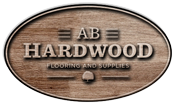You'll find hardwood flooring that suits virtually any style. Here are some considerations to keep in mind when choosing your wooden floors for the kitchen:
Tough Enough? When treated right, hardwood floors last a lifetime. But beware of pets' claws and high heels, never leave standing water, and consider window treatments to limit sunlight.How to Clean: Wipe up spills immediately. Sweep, dust, or vacuum regularly and occasionally wipe the surface with a damp mop or cloth. Avoid oil-based sprays, waxes, and polishes, as well as abrasive cleansers.
We carry a big variety of hardwood floors and our professional staff members will be more then happy to choose floors for your kitchen.
Polishing Hardwood floors
A finish on hardwood floors does not last forever. It may be that your floors need to be refinished. You can extend the life of a floor finish by making a no shoe policy, clipping pet nails, and using furniture protectors. Even with these precautions, eventually a hardwood floor will need to be refinished. Here are some steps of how to do it in a correct way:
Remove as much furniture as possible. If you are cleaning your floor alone, place furniture pads under the legs and slide the furniture out of the room. Vacuum your hardwood floors to get up all the dust and debris before you clean it. Vacuums with faulty wheels can scratch floors, so pick up dust with a broom if you don’t have a good mode. Find out about your hardwood floor if you don’t know what the wood is and the finish is. Hardwood floors have a hard finish and can be cleaned with a small amount of water, while shellac or lacquered floors can’t have any water on them and may need to be waxed regularly.
Experiment to find the right products for your floor type.
There are a lot of products that market themselves as hardwood floor cleaners, but don't measure up. A good place to start is finding out what your floor manufacturer recommends. This way we are highly recommending to buy your hardwood cleaning products at the Flooring store such ours. Our professional will recommend what cleaners you need for a specific floors type .
Clean hardwood floors with a mop. Mix a few drops of Bona Hardwood Cleaner with water. Wring out the mop extremely well and then run the mop along the grain. We carry a great selection of hardwood cleaning products, so please don’t hesitate to stop by in our store to get the products for your floors.
Spray the polish on the floor or apply it to a cloth, according to package directions. Use a feathering technique to wipe the polish in a semi-circle. Overlap your feathering strokes for a streak free finish. In our store on 3100 N Elston Ave, you will also find a great selection of Hardwood Cleaners from different brands.
Visit our webswite at www.abhardwood.com
We are located on 3100 N Elston Ave ., Chicago IL 60618






